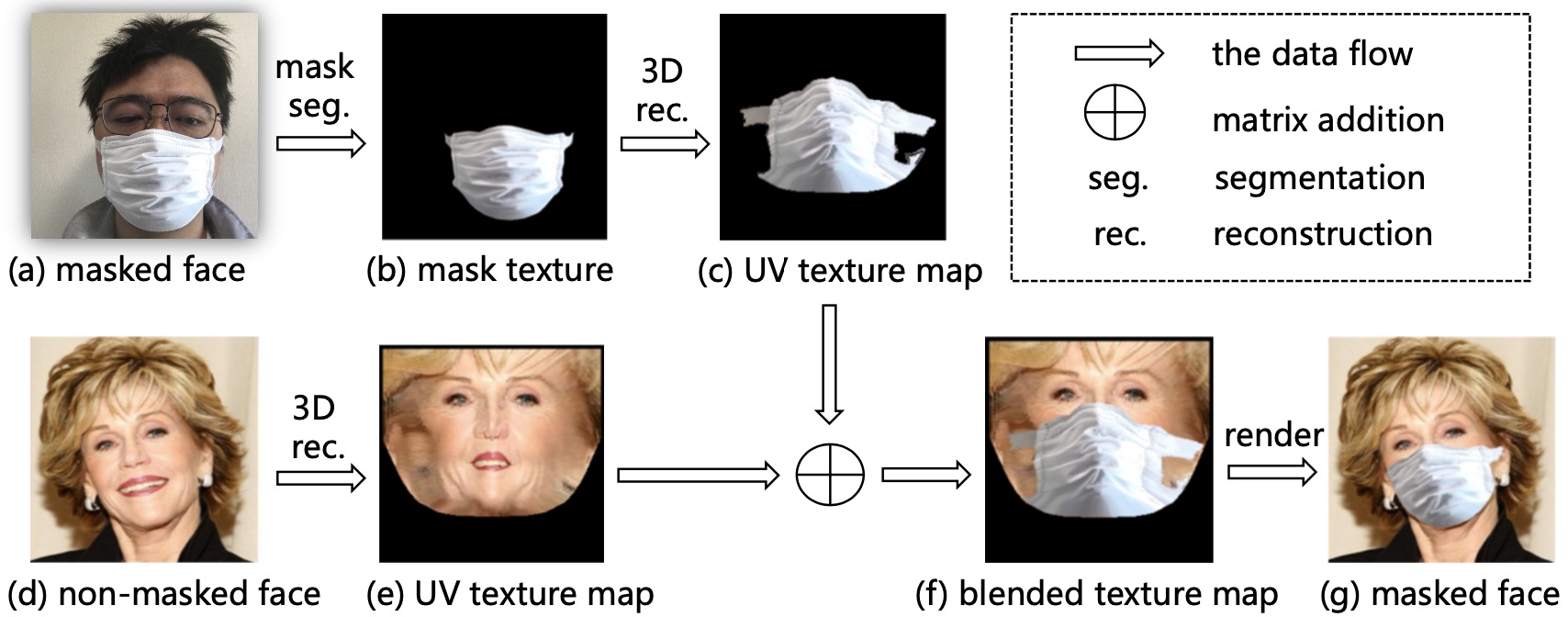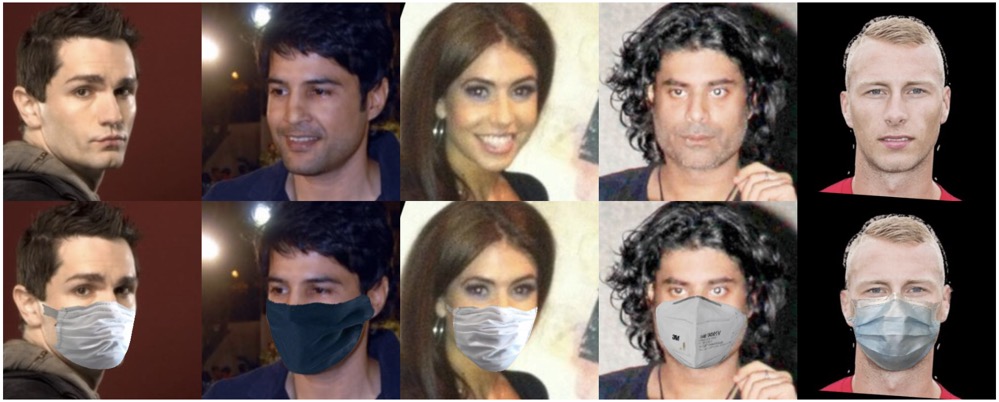This project aims to add masks to the facial dataset, which is based on FMA-3D and constructs a effective, easy to operate, and efficient pipeline for facial detection, alignment, and mask wearing.
- Effect: Images generated based on FMA-3D are more realistic
- Efficient: This project provides a dual acceleration solution, using cython and multi process acceleration
- Easy: You can combine any acceleration scheme according to the server configuration
- Write the whole process by multi-processing.
- Write the function of render in face_masker.py by c++.
- Resolve the bug of noisy generated images
A method for adding a mask on a non-masked face image. Given a real masked face image (a) and a non-masked face image (d), we synthesize a photo-realistic masked face image with the mask from (a) and the facial area from (d).

To use Cython acceleration, you need to first compile files under the Linux system
- Step 1: Enter the utils/Python directory
- Step 2: Execute
python setup.py build_ext -iGenerate file - Step 3: Rename the generated. so file to render.so
- normal
python add_mask.py <input-dir-path> -o <output-dir-path> -r <sample-ratio> -s <1: Using Cython to speed up, 0: No speed up>
# Example
python add_mask.py ./webface42m -o ./output -r 0.1 -s 1
- use multi process acceleration
python add_mask_multiproc.py <input-dir-path> -o <output-dir-path> -r <sample-ratio> -s <1: Using Cython to speed up, 0: No speed up> -c <nums-cpu-cores>
# Example
python add_mask_multiproc.py ./webface42m -o ./output -r 0.1 -s 1 -c 8
- python >= 3.7.1
- numpy
- pyyaml
- pytorch
- torchvision
- scikit-image
- opencv-python
- Cython(optional)
